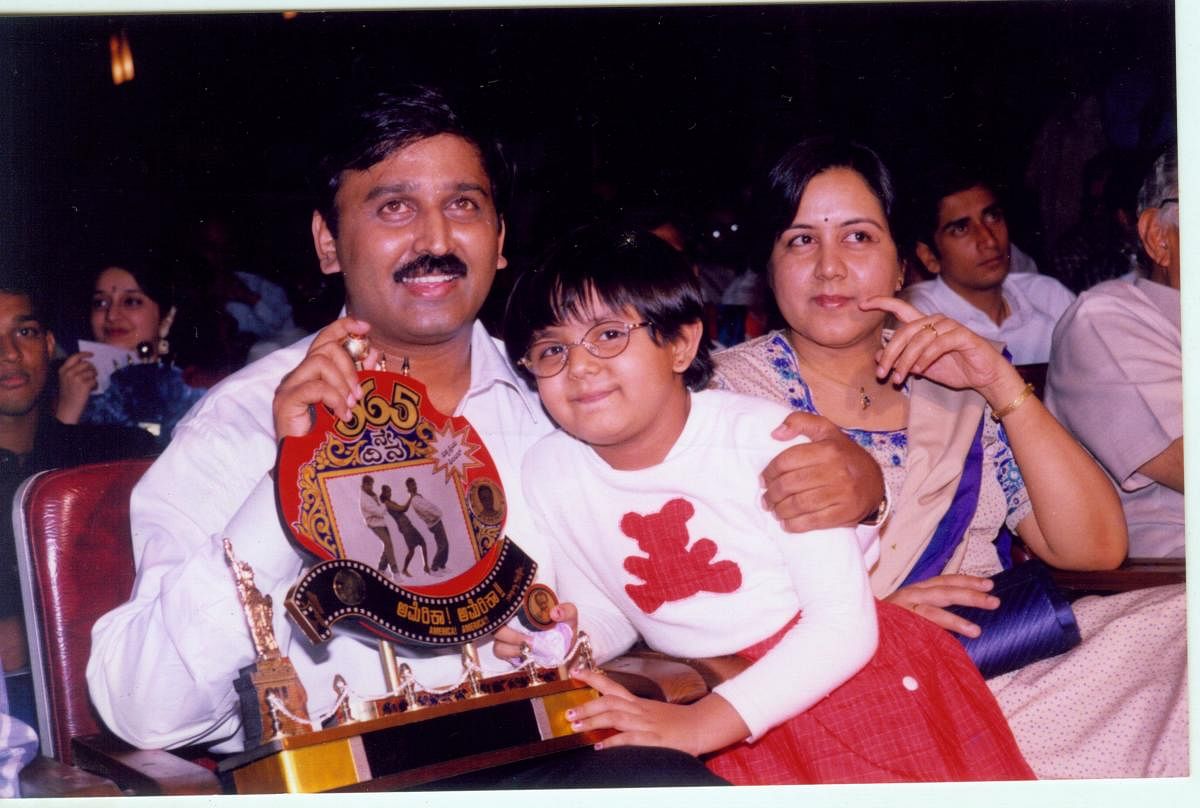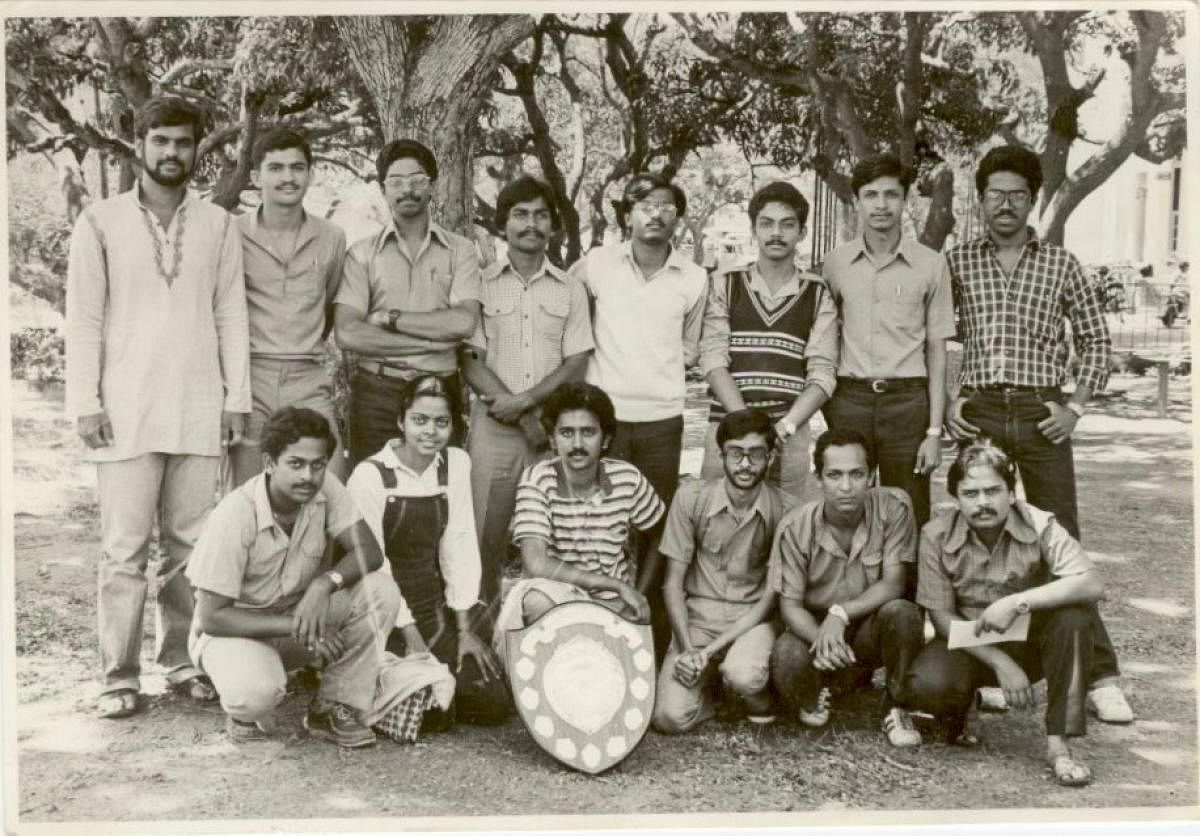

Playing a man trapped in unrequited love isn’t easy. Such characters, marked with grey shades and relentless, illogical yearning for love, are expected to stir up resentment in viewers or evoke empathy.
Ramesh Aravind, in a series of blockbusters during the late 90s, was excellent as a man who struggled to accept rejection. In triangles like ‘Namoora Mandara Hoove’ (1996), ‘Amrutha Varshini’ (1997) and 'America America’ (1997), we saw him portray desperation and self-doubt with aplomb.
He played his roles to a T in complex dramas like ‘Mungarina Minchu’ (1997), ‘Hoomale’ (1998) and ‘Chandramukhi Pranasakhi’ (1999).
The actor has a simple philosophy for getting into the skin of a character. “You just need to become that particular instrument through which the music comes,” he tells Showtime. “The whole idea of acting is to understand what the character is going through. It’s about your IQ as a performer. It’s about putting yourself in the shoes of the character. You have to accept his world,” he explains.
Even after 30 years in the industry, Ramesh talks about cinema with childlike enthusiasm. His fascination with the art goes back to his childhood when watching movies was like a ritual.
“I used to watch a movie every Sunday with my family,” he recollects. “We watched morning shows at Shanthi Theatre in Jayanagar. It was a big deal for me to stand in a queue, to see the housefull board coming in and the curtain going up before every show,” he says.
Long before he got people hooked to his performances, Ramesh was influenced by iconic artistes and cult-classics.
“I can never forget the last flood scene in ‘Bhootayanna Maga Ayyu’ (1974). As a Bangalore boy, I was thrilled to see horses and elephants in ‘Gandhada Gudi’ (1973). There was no Discovery Channel then. Other big forces during that time were Vishnuvardhan and Anant Nag. I loved Anant Nag’s ‘Mududida Tavare Aralithu’ (1983) and Srinath’s ‘Chiranjeevi’ (1976). In Tamil, Kamal (Haasan) and Rajinikanth were reigning at that time and I watched all their films,” he says.
Academically bright, Ramesh also cherished his acts on the stage which fetched him applause. “When I was in the seventh standard, the heroine of a skit refused to act because of stage fright. My teacher pushed me on to the stage to finish the show. I went and spoke unprepared but nobody realised that this goof-up had happened. That’s when I realised I can be in this business of acting,” he remembers.
He led a successful drama group while pursuing engineering at the University Visvesvaraya College of Engineering (UVCE). There on, it was a steady transition as Ramesh moved to television, his gateway to films.
After a successful career in multiple South Indian industries, he plied his trade in writing and direction. As good as he was in emotionally impactful films, Ramesh was at ease with comedy. In ‘Sathi Leelavathi’ (1995, Tamil), ‘Ulta Palta’ (1997), ‘Kurigalu Saar Kurigalu’ (2001) and ‘Panchatanthiram’ (2002, Tamil), he displayed good comic timing.
“There was a humour club called 'International' in National College. Every Sunday, the club would meet and tell jokes. I enjoyed it. Then there was Crazy Mohan (renowned playwright and screenwriter). I used to watch all his plays when he came to Bangalore,” he says.
His innate knack for public speaking is evident in the well-received television talk show ‘Weekend with Ramesh’, which has completed four seasons. Personalities from the Kannada industry appear very comfortable talking to Ramesh about their highs and lows in lives.
“Lot of psychiatrists have told me that they (guests) are opening up to me as though I am a psychiatrist. As a host, I mean no harm to them and try to bring out the best in them,” says the 55-year-old.
Ramesh is forever grateful to legendary filmmaker K Balachander who launched him in ‘Sundara Swapnagalu’ (1986). “His last film ('Uttama Villain', 2015) was with me as a director. That’s a complete circle and it is one of the best ways to end a relationship.”
On his long-standing friendship with Kamal Haasan, Ramesh says: "I have stood in a queue to watch his ‘Sagara Sangamam’ (1983). Then when you become a co-star, a friend, and get to direct his film, it’s a dream come true.”
In his illustrious journey, Ramesh is one of the few actors to have performed alongside all the big stars of Sandalwood. “Vishnuvardhan used to say I was like water, mixing well with any drink,” he laughs. “I have had a good equation with all the heroes. Perhaps they felt I am harmless. I didn’t believe in camps and groups. I could do so many films, meet so many talented people.”
Ramesh thanks his parents for believing in his choices and credits his wife Archana for his career’s longevity. “My mother (Saroja), despite me being good in studies, never questioned why I was getting into acting. In cinema there is no guarantee or security. It’s an uncertain field. You don’t know when you get your next offer. Yet, if I lead a simple and care-free life today, it’s because the load has been shifted on my wife's shoulders. She has handled it remarkably well,” he says.
Author of two books ('It's No F_N Without You' and 'Khushiyinda Ramesh'), Ramesh wants to be a constant learner. "It doesn't matter if I finished 30 years in the field. Tomorrow is a new day and I want to learn something," he signs off.